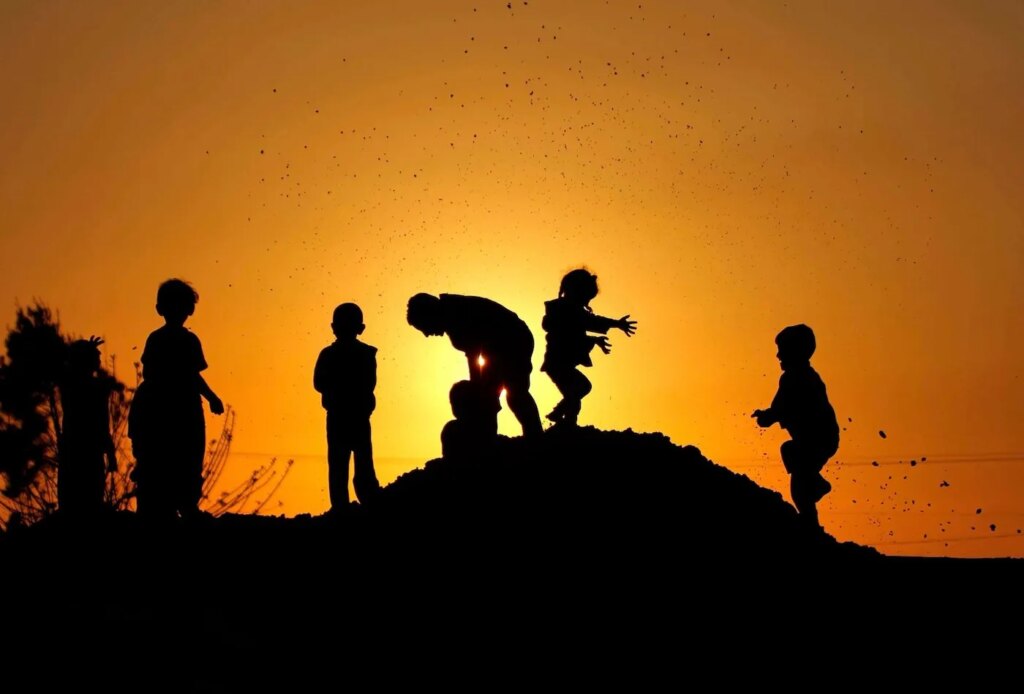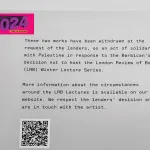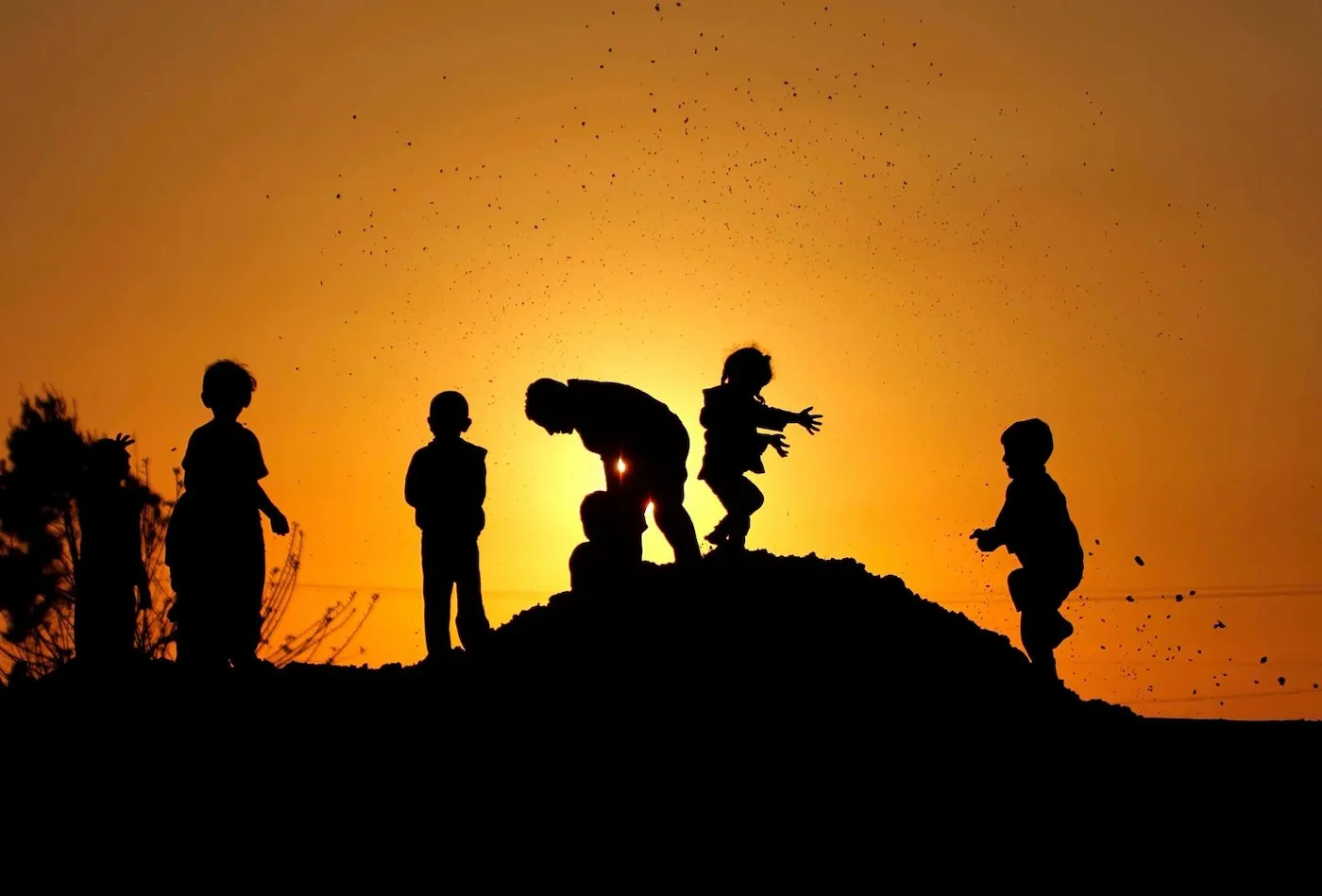
Zawyeh Art Gallery, the organizer and sole venue of the Ramallah Art Fair, wants it known that the name of the event is a bit of a misnomer. Yes, the works in its newly opened fourth edition are for sale—and at purposefully affordable prices—but here the market comes second. This is foremost a showcase of Palestinian stories.
Titled “Voices of Resilience,” this iteration of the Ramallah Art Fair (RAF) features more than 100 artworks across a diverse range of mediums by 35 artists born and living in Palestine or settled abroad. The works are on display in Zawyeh’s flagship (the gallery has a Dubai outpost, too) and can be viewed online. Though Yusef Hussein, the gallery manager, said that collectors reserved most of the offerings well before the December 7 opening. The fair runs through January 18.
“The work coming out of these artist studios is strong, pure,” Hussein said. “We have a large network of collectors around the world that want to see what Palestinian artists are producing. The momentum has been boiling since December [of 2023].”
He added, “We want to encourage a younger generation of here.” Hence the accessibility, with most price tags capped around $5,000. Works by the most established artists in the show, such as Sliman Mansour and Vera Tamari, are priced below their market value.
For the first time, the fair has been split in three sections: Contemporary, Photography, and Rare, the last of which spotlights works by seminal Palestinian artists, including pioneering modernist and historian Ismail Shammout and Fathi Ghaben, a painter and educator who died in Gaza in February after being denied medical care.
The art reflects the generational divide. The oldest works contains anecdotal and collective accounts of the Nakba, the violent displacement of hundreds of thousands of Palestinians in 1948 during the establishment of Israel. Mustafa Al-Hallaj (b. 1938, Salama), for example, resettled in Damascus and later Beirut before returning to the Syrian capital during the 1982 Lebanon War. Al-Hallaj lost some 25,000 prints during the bombing of Beirut; one of his surviving works are in the show. He had a varied practice—prints, murals, etchings, sculpture—and a melancholic palette. In a black and white untitled 1969 engraving on paper, a woman wreathed in leaves raises a foot as though she were ready to step onward, moving out of sight: more mythology than portraiture.
Al-Hallaj’s print provides an interesting contrast to the work of Nabil Anani, which is also on view. Many of his mixed media works are busy, bisected, and richly colored. The Road to Freedom, an ink and carving on wood, is a mini epic of endurance under occupation. Created in 2004, the piece has tragically proven timeless.
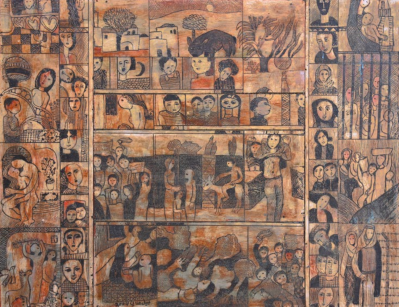
Israel’s military campaign in Gaza, which hit its one-year mark this October, has generated widespread destruction and death, leading human rights groups, including Amnesty International and Human Rights Watch, to declare Israel’s action a genocide.
The West Bank, where Ramallah is located, has also seen a rise in settler violence since October 7, 2023.
The inaugural Ramallah Art Fair was organized during the Covid-19 pandemic, though by consequence of the occupation, every edition must overcome extraordinary circumstances. The fourth edition was initially planned to open in late 2023, however those plans were shelved after October 7. “It was a difficult decision. We take a lot of pride in this event,” Hussein said. At the time, Zawyeh Gallery had “redefined its moral role as a platform for these artists’ voices, as way to generate income for artists in Gaza.”
This past January, the gallery staged a group exhibition of newly produced political posters, an art form with deep ties to the Palestinian liberation movement. By the summer, Hussein and his team had decided to move forward with the fourth RAF, though assembling the works, especially the historical section, was an unprecedented undertaking. And the logistics of transporting art—or anything, even the gallerists themselves—from Gaza to the West Bank are difficult any time of year.
“Before October, we could bring art from Gaza [to the West Bank], but we could never return the pieces,” Hussein said. This became a silver lining, as some artists who lost their studios in Gaza this year could still count a few works safe in Ramallah. Other artists managed to smuggle artworks out of the besieged strip, like Ayman Essa, whom Hussein said brought with him to Egypt the 2023 painting Blue Portrait. Essa’s works in the show all feature an elegant woman bathed in blues and reds who seems divorced from any discernible narrative.
A sense of resilience unites every artwork here, but this isn’t a show necessarily about war. Rather, it’s about the world as experienced by these 35 people.
Paintings by Malik Abu Salameh, an artist born in Bethlehem in 1998, reproduce childhood memories, with landscapes that blur with shadows like a dissipating dream. Ahmad Salameh and Rehaf Batniji, two photographers featured alongside Yaqeen Yamani, both focus on work and leisure. Salameh, an artist and founder of the MyStory project, aptly titled each of his three works On the Shores of Gaza. In them, men haul in fish and children play as a spectacular setting sun washes the sky orange. Batniji’s pictures of the beach, in contrast, are overcast and still, and feel more fragile for it. In one, a solitary child looks across the sea.
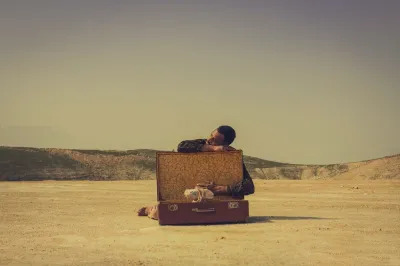
A strength of the show is the dialogue between the emerging and canonical artists; one introduction inevitably leads to another. The most experimental works, for example, reference or outright layer historical elements onto mixed medias. Yamani, one of the youngest artists here (b.1997, Jericho), reinterprets the work of Mansour in her performance-photography series “Suitcase.” Mansour’s iconic 1973 painting The Camel of Hardship depicts an elderly Palestinian man carrying the whole of Jerusalem on his back. Yamani, carrying on Mansour’s themes of displacement and dignity, paired a younger man with a suitcase. He sits in it, drags it, even cradles it as if it’s precious, despite the weight.
“I had a poster from Sliman Mansour in the home I grew up in, and now we are in the same exhibition,” Mahmoud Alhaj, an artist from Gaza, told ARTnews. “Mansour and Nabil Anani didn’t know they were teaching me without even meeting me, just by their art. They encouraged me to keep returning to this question—the question of Palestine.”
A prolific photographer, filmmaker, and digital artist who has exhibited widely in and outside of Palestine, Alhaj interrogates the architecture of colonial violence and its generational impact on Palestinian geography. Describing his practice as being “akin to recycling,” he creates collages of archival images and charged ephemera that testify to the changes inflicted on Palestine’s cities, and with intention, its residents. In Fragile No. 6 digital photographs of residential buildings have been layered with medicine pills sheets, a reference to the rising abuse of non-prescription drugs in Palestine, particularly among its young male population.
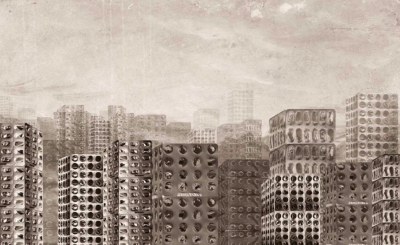
Alhaj was calling from France, where he said people are distanced from Gaza’s reality. “They just see the destruction of Gaza,” he explained. “They have to get closer, to see and hear the stories.”
That, he suggested, is the importance of an event like the Ramallah Art Fair. “The artist from Jerusalem faces an Israeli soldier like the artist from Gaza, but in a different way,” he said. “We have the same enemy, but the art we create is different. You need it all to see the full picture.”

